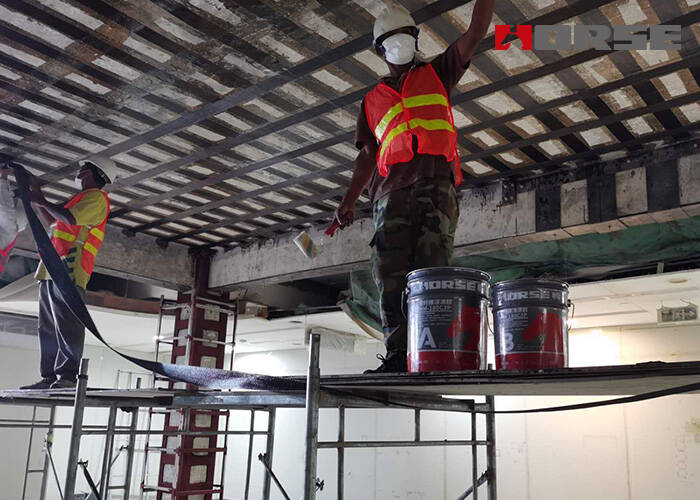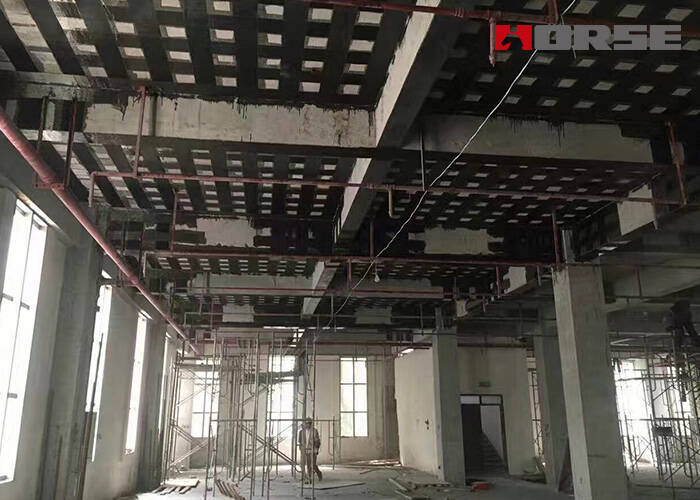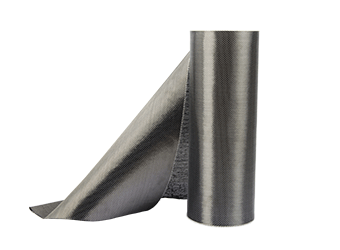Solutions
Horse Construction offers full range of structural strengthening materials with technical supports, documentation supports, products supports, project supports.
Carbon Fiber for Structural Reinforcement

In the field of construction, the most widely used composite material for strengthening concrete reinforced concrete structures is carbon fiber sheet, called CFRP (abbreviation for carbon fiber reinforced polymer), followed by glass or aramid (Kevlar); Organic matrix, usually epoxy resin.
Composite materials are materials composed of fibers, which are responsible for providing rigidity and mechanical resistance, while flexible but not very durable matrices give overall integrity, enveloping and protecting fibers from chemical erosion, wear, etc, Simultaneously transfer stress between some fibers and other fibers to their surfaces.
Advantages of carbon fiber
In recent years, carbon fiber reinforcement technology has become widespread and popular, with a sharp increase in the number of implementations. Some of their reasons are as follows:
High resistance, with linear stress-strain behavior until fracture (brittleness).
Good fatigue behavior.
Excellent durability as they are not affected by corrosion issues or chemical attack. Only excessive radiation or direct impact can lead to deterioration.
The possibility of fiber orientation to optimize its behavior in one direction has led to the increasing use of carbon fibers as reinforcement systems.
Carbon fiber composite materials are lightweight and easy to handle. Therefore, its placement speed on site is fast and there is actually no need to provide auxiliary devices.
Carbon fiber is better suited to the possible irregularities on the original concrete surface than steel strip. This usually reduces the preliminary work required to prepare the components to be reinforced.
Carbon fiber composite materials can appear in almost any length to avoid joints or splices.
Carbon fiber issues
Due to the behavior of epoxy resin itself, comprehensive fire resistance is required, resulting in the loss of fire resistance. In terms of fire, the temperature is relatively low.
If reinforcement is strictly required in the event of a fire, the entire component must be fully protected by fire-resistant panels or coatings.

application
The application process is generally divided into the following stages:
Prepare support by sandblasting or grinding. Thoroughly clean, remove dust, loose or poorly adhered components, and chamfer edges and corners.
Cut tissue with scissors or other cutting tools.
Apply impregnation adhesive.
Lay the fabric on a surface pre impregnated with resin.
Use special rollers to press the fabric, impregnating only along the fiber direction.
It can be applied to surfaces, cement-based coatings or paints, and columns. Protective boards, paint, or mortar can improve their high-temperature resistance.
Advice
In this regard, the following suggestions are important:
The minimum characteristic resistance of the original concrete concrete must be 17 or 20 N/mm2.
This type of reinforcement should not be applied to damaged supports or supports with obvious cracks. In this case, it is necessary to repair or seal the cracks in advance.
The original concrete concrete surface must be leveled using epoxy leveling adhesive in accordance with the steel bar specifications.
It is recommended to apply liquid epoxy resin on the contact surface to increase the surface resistance of the original concrete concrete.
For all this, we can say that the reinforcement system for concrete-reinforced concrete structures by means of carbon fiber composite materials allows great versatility, ease of execution, adaptability to almost any geometry, but, above all, it is a system that does not increase the section of the structure.
You can find anything here you are in need of, have a trust trying on these products, you will find the big difference after that.

High strength, unidirectional carbon fiber wrap pre-saturated to form a carbon fiber reinforced polymer (CFRP) wrap used to strengthen structural concrete elements.

High strength, unidirectional carbon fiber fabric pre-saturated to form a carbon fiber reinforced polymer (CFRP) fabric used to strengthen structural concrete elements.

High strength, unidirectional carbon fiber sheet pre-saturated to form a carbon fiber reinforced polymer (CFRP) sheet used to strengthen structural concrete elements.